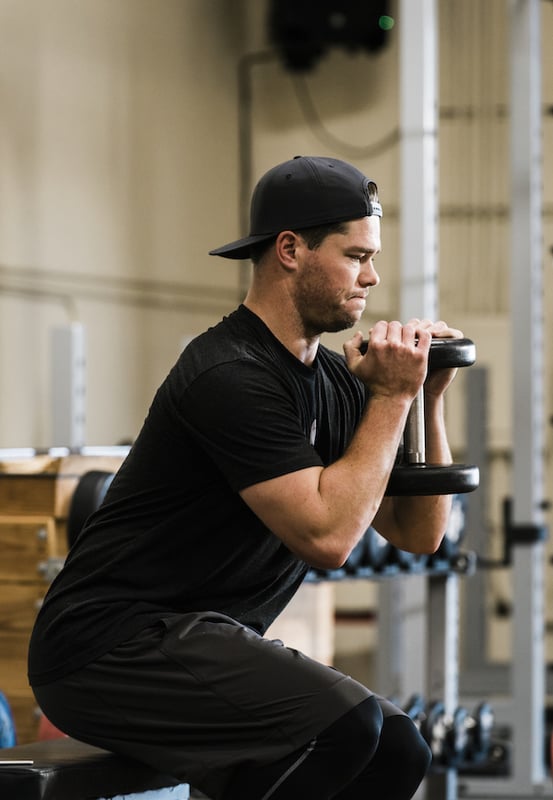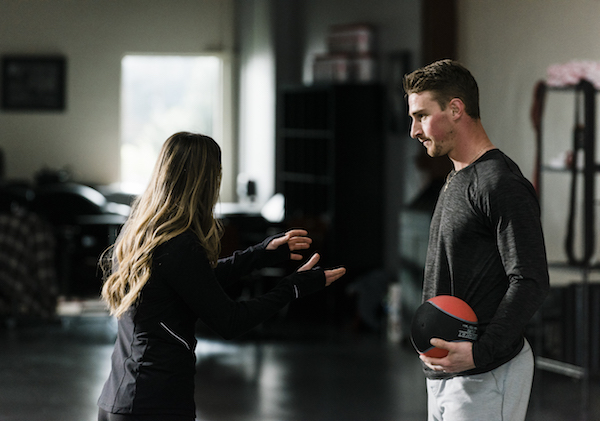
Watching elite athletes perform can be mesmerizing. So much so, sports are a part of the fabric of our society. Elite athletes of all sports continue to break records and push the boundaries of human movement and performance. In the world that craves sports specificity and specialized training, athletes strengths are getting even stronger; however their weaknesses are also getting even weaker. We are in the midst of an injury epidemic at every level, from youth to professional. Athletes today are playing and practicing their sport more than they ever have. Coincidentally, the number of performance coaches, training facilities, injury prevention programs, and the number of athletes utilizing these things is also growing. But as we continue to learn more about how the human body moves and injury risks, shouldn’t injury rates be decreasing?
Athletes are master compensators, and elite athletes perhaps even more so. Athletes who excel at a young age are often given a pass when it comes to working on certain foundational movements. Exceptional young athletes are consistently asked upon to display and continue to refine their strengths. The emphasis in youth sports has changed from a developmental model to a focus on winning and exposure over all else. Young athletes are playing their sport year round with the hopes of getting scouted and recruited. They are chipping away at the all-important 10,000 hours of deliberate practice by working with sport, skill, speed, and strength coaches. Unfortunately, the majority of this time is spent working on that athlete’s strengths, as working on their weaknesses is much less fun. Very rarely will we see an elite speed or power athlete posting videos about their mobility routine on social media.
For example, basketball players doing countless plyometrics and explosive lifts, offensive linemen focusing on increasing strength in the bench press and the squat, and baseball players doing rotational drills. The athletes look great doing these movements, and sport coaches are often happy because the athletes are doing movements that mimic their sport. However, when that athlete gets hurt, you better be able to defend your programming.
Athletes who become extreme in one way or another have an unhealthy imbalance which puts them at greater risk of injury. The “fast twitch” explosive athlete can be at increased risk of injury because of their lack of eccentric strength, anterior pelvic tilt, and excessive stiffness. The big strong athlete can be at increased risk of injury because of their high levels of strength but their inability to transfer and dissipate that force. The long smooth athlete can be at risk because of their lack of strength and stiffness. What makes these athletes special also puts them at risk of injury.

With an athlete spending all of his or her time practicing, perfecting, and performing their strengths, when do they get a chance to work on their weaknesses? When an athlete is removed from the environment of sport and meant to work strictly on movement, working on a weaknesses becomes frustrating. It can be discouraging for an athlete who is used to being the best to struggle working on their weaknesses. Many strength coaches training programs will simply mirror the movements and physical qualities of the sport often because of a well meaning but under educated sport coaches influence. Performance coaches often struggle to sell what they believe their athletes need to be doing. By giving athletes only movements that they do well in their training we are doing them a disservice.
Athletes can excel despite poor usage of anterior chain strength and stiffness but in the long run they can suffer because they are unable to flex or bend. Rotational athletes are masters at disassociation but can lack postural awareness, when these athletes become “too rotational”, issues can arise. Explosive athletes who live in a flexed position can be amazing at acceleration and deceleration, but their inability to achieve full extension and produce force for longer durations can lead to increased risk of muscle strains. We absolutely want athletes’ strengths to improve, but ignoring their weaknesses can have catastrophic consequences.
Athletes that play more will have more of a risk of getting injured because there are more opportunities. This is pretty simple. The best athletes are the ones that are going to play the most. Most athletes will (and really should) have some sort of imbalance. Genetics, sport specialization, training and injury history are just a few things that will dictate what that imbalance is and how extreme it becomes. Chasing perfect balance, for example symmetry from right to left side or the mythological “neutral pelvis,” can not only be a fool’s errand, but actually hinder your athletes performance by taking away what they do best. The goal is to manage an athlete’s weakness to keep their compensation less extreme, but still continue to work on improving performance. To increase athletic resilience the goal is to manage that imbalance and allow them to do what they do best, more often.
Evaluate movement and identify strengths and weakness with your athletes
Give your athletes what they need, strengths and weaknesses can become extreme, especially in-season
The goal isn’t perfect balance, but to have a healthy imbalance that allows your athletes to perform at a high level